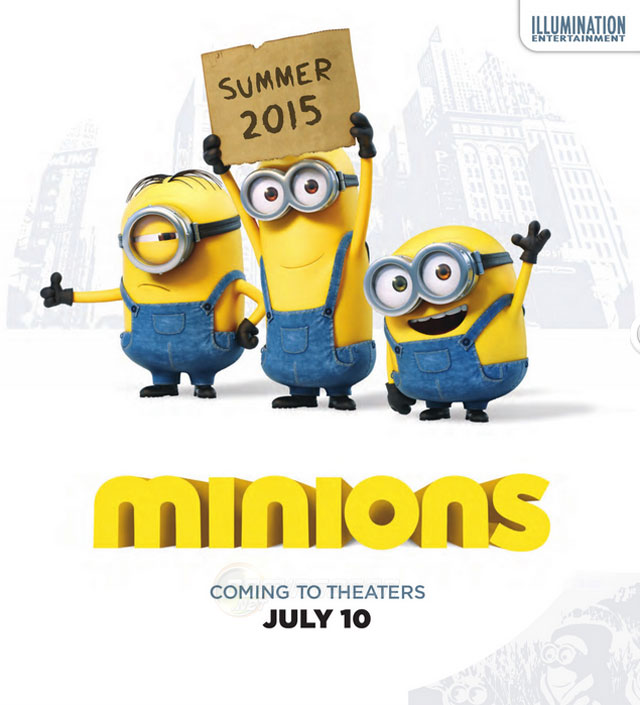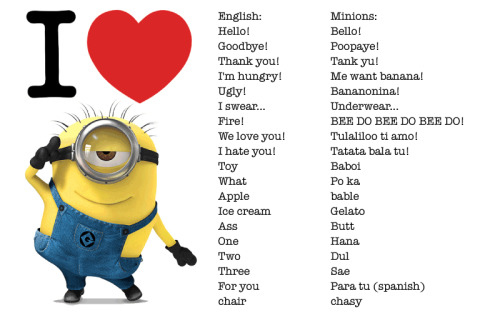Minions are Kevin
T he Minions are Approaching The highly anticipated prequel to the Despicable Me franchise, Minions, is coming to theaters this summer. This movie is an origin story for the lovable, loyal, and highly incompetent minions who stole the show in the first two movies. The main story has three minions, Kevin, Stuart, and Bob looking for a new master for them and their fellow minions to devote themselves to.
W hen this movie is described as an origin story, it couldn’t be more literal. The movie opens with the evolution of the minions from single celled organisms to the Hostess Twinkie shaped creatures they grow to be and shows them continually losing their masters in the most unfortunate ways.
T he main action of the movie will focus on the 1960’s where the trio of Kevin, Stuart, and Bob cross paths with the world’s first female super villain, Scarlet Overkill. The trio travels between New York and London. But, as things often get with minions, the situation quickly becomes a series of complicated disasters and Kevin, Stuart, and Bob must act quickly to keep all of their fellow minions, who are anxiously awaiting their return in Antarctica, from getting wiped out. Steve Carell, who voiced Gru in the first tow movies in the series, will not be in the prequel. However, Sandra Bullock will be voicing Scarlet Overkill and other actors such as Michael Keaton, Alison Janney, and Jon Hamm will also be providing voices for the new movie. While Minions was originally scheduled to be released during Christmas 2014, it was pushed back to this summer because of concern about the number of family films released over Christmas.
Minion official trailer
I nstead Minions will be released between Independence Day 2 and Superman Vs. Batman, allowing it the best chance of box office success. While the minions were a vital part of the first two Despicable Me movies, they were clearly in supporting roles. The characters speak in their own gibberish sounding language that occasionally has intelligible words like “banana” or “gelato”.
T he challenge for this movie will be how to allow the minions to step out as leads of a movie with their limited language. Judging from the most recently released trailer, the creators have decided to double down on the slapstick antics of the minions and just let the minions tell the story in their own sweet, well-meaning, and bumbling way. Letting the minions be themselves is good news for fans of the creatures and moviegoers.
Universal Animation is looking for another huge box-office win after the first two movies in this series have done so well both in the U.S. and internationally. They are taking a bit of a risk in letting Steve Carrel leave the franchise and focusing instead on the minions, who by definition were part of the background. Big studios are generally taking fewer risks and making less interesting movies over the past several years.
All post production video by DARWIN.it
Even though this film is technically part of a franchise, Universal should be applauded for taking things in a new direction and turning their storytellers loose. Minions promises to be one of the highlights of the summer movie season for adults and children alike.
the Minion language



